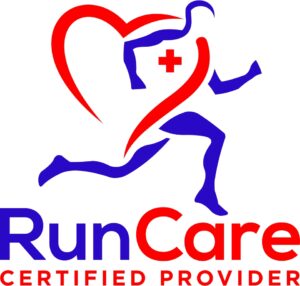
Introduction
Embark on another enlightening journey with WildHawk Physical Therapy as we delve into the realm of dry needling—a nuanced therapeutic technique making waves in the field of physical rehabilitation. In this comprehensive article, we’ll unravel the intricacies of dry needling, exploring its unique benefits, applications, and why it stands as a valuable complement to traditional physical therapy practices.
The Essence of Dry Needling
Dry needling is a specialized physical therapy technique that involves the insertion of thin, filiform needles into specific trigger points or tight bands within muscles. Unlike acupuncture, which is rooted in traditional Chinese medicine, dry needling is firmly grounded in Western medicine principles, targeting musculoskeletal pain and dysfunction.
Understanding Trigger Points and the Dry Needling Process
Trigger points are localized areas of muscle tightness or knots that can cause pain, restricted movement, and even referred pain to other parts of the body. Dry needling aims to release these trigger points, promoting muscle relaxation, improved blood flow, and pain relief.
The dry needling process involves the following key steps:
- Assessment: A thorough evaluation by a skilled physical therapist identifies the presence of trigger points and determines the optimal locations for needle insertion based on the individual’s musculoskeletal condition.
- Needle Insertion: Sterile, thin needles are precisely inserted into the identified trigger points. The term “dry” in dry needling refers to the absence of injecting any substance into the body; the needles are solid, not delivering any medication.
- Stimulation: The needles may be gently manipulated or stimulated to evoke a twitch response in the muscle. This twitch response is a sign that the trigger point is being targeted, and it often leads to muscle relaxation.
- Post-Needling Care: Following the dry needling session, physical therapists may provide guidance on post-needling care, which may include stretching exercises, heat application, or other modalities to optimize the benefits of the intervention.
The Distinctive Benefits of Dry Needling
- Pain Relief: Dry needling directly targets trigger points, promoting the release of tight muscles and reducing pain. This can be especially beneficial for individuals dealing with chronic pain conditions.
- Improved Range of Motion: By releasing tight bands of muscle, dry needling contributes to improved flexibility and range of motion. This can enhance overall functional movement and performance.
- Enhanced Blood Flow: The insertion of needles stimulates blood flow to the targeted areas. Improved circulation facilitates the delivery of oxygen and nutrients to the muscles, supporting the natural healing process.
- Accelerated Healing: Dry needling promotes a local inflammatory response, which, when controlled, can contribute to tissue repair and regeneration. This may accelerate the overall healing process.
- Complementary to Exercise: Dry needling can be seamlessly integrated into a comprehensive physical therapy plan that includes therapeutic exercises. The combination of targeted needling and exercises creates a synergistic effect for optimal outcomes.
Conditions Treated with Dry Needling
- Muscle Tightness and Spasms: Dry needling is effective in addressing localized muscle tightness and spasms, providing relief and restoring normal muscle function.
- Myofascial Pain Syndrome: Individuals with myofascial pain syndrome, characterized by trigger points and muscle pain, often find relief through dry needling.
- Chronic Pain Conditions: Conditions such as fibromyalgia or chronic low back pain may benefit from the pain-modulating effects of dry needling.
- Referred Pain Syndromes: Dry needling can help alleviate referred pain from trigger points, providing relief in areas distant from the actual site of dysfunction.

The Role of Dry Needling in Rehabilitation Programs
- Individualized Treatment Plans: Skilled physical therapists integrate dry needling into individualized treatment plans based on the specific needs and goals of each patient. This tailored approach ensures that dry needling aligns seamlessly with overall rehabilitation objectives.
- Enhanced Effectiveness of Exercises: Dry needling can precede therapeutic exercises, preparing the muscles for engagement and making exercise interventions more effective. Relaxed and pain-free muscles are more responsive to rehabilitation efforts.
- Facilitation of Active Rehabilitation: As trigger points are released, individuals may experience decreased pain and increased mobility, facilitating active participation in rehabilitation exercises. This positive cycle of reduced pain and enhanced movement supports the overall rehabilitation process.
What to Expect During a Dry Needling Session
Initial Assessment: Your physical therapist will conduct a comprehensive assessment to identify trigger points, understand your musculoskeletal condition, and determine the suitability of dry needling for your specific case.
Informed Consent: Before the dry needling session, your therapist will explain the procedure, its potential benefits, and any associated risks. Informed consent is a crucial aspect of patient-centered care.
Needle Insertion: The insertion of thin needles is generally well-tolerated. Some individuals may feel a mild, temporary discomfort or sensation, while others may not feel the needles at all. Communication with your therapist is key to ensuring your comfort during the session.
Post-Needling Sensations: It’s common to experience post-needling sensations, including muscle soreness or aching. These sensations are typically transient and can be alleviated with post-needling care recommendations from your therapist.
FAQ Section
Frequently Asked Questions:
Q: Does dry needling hurt?
A: Sensations during dry needling vary among individuals. While some may experience a mild, temporary discomfort, others may not feel the needles at all. Communication with your therapist is essential to ensure your comfort during the session.
Q: How long does it take to see results from dry needling?
A: The timeline for experiencing results from dry needling depends on various factors, including the nature and severity of the condition, individual response, and adherence to post-needling care and exercises. Some individuals may notice immediate relief, while others may experience gradual improvements over several sessions.
Q: Are there any side effects or risks associated with dry needling?
A: Dry needling is generally considered safe when performed by trained and licensed physical therapists. Mild post-needling sensations, such as muscle soreness, are common and typically temporary. Serious complications are rare but can include infection or bruising at the needle insertion site.
Q: Can dry needling be combined with other physical therapy interventions?
A: Yes, dry needling is often integrated into comprehensive physical therapy plans. It can complement other interventions such as therapeutic exercises, manual therapy, and modalities to create a holistic approach to rehabilitation.
Conclusion
In conclusion, dry needling emerges as a precision tool within the toolkit of physical therapy, offering targeted relief for musculoskeletal pain and dysfunction. As we navigate the intricate landscape of rehabilitation, the skilled application of thin needles proves to be a valuable asset, promoting pain relief, improved mobility, and accelerated healing. Whether incorporated into a broader rehabilitation plan or employed as a standalone intervention, dry needling stands as a testament to the evolving and personalized nature of modern physical therapy. WildHawk Physical Therapy located in Asheville, NC is a dry needling clinic. Reach out to us if you are looking for help.








